Two microphones aboard the six-wheeled spacecraft add a new dimension to the way scientists and engineers explore the Red Planet.
Thanks to two microphones aboard NASA’s Perseverance rover, the mission has recorded nearly five hours of Martian wind gusts, rover wheels crunching over gravel, and motors whirring as the spacecraft moves its arm. These sounds allow scientists and engineers to experience the Red Planet in new ways – and everyone is invited to listen in.
“It’s like you’re really standing there,” said Baptiste Chide, a planetary scientist who studies data from the microphones at L’Institut de Recherche en Astrophysique et Planétologie in France. “Martian sounds have strong bass vibrations, so when you put on headphones, you can really feel it. I think microphones will be an important asset to future Mars and solar system science.”
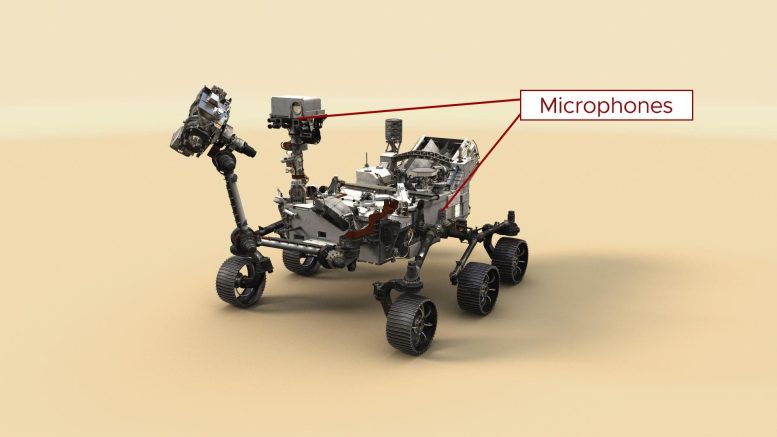
This illustration of NASA’s Perseverance Mars rover indicates the location of its two microphones. Credit: NASA/JPL-Caltech
Perseverance is the first spacecraft to record the sound of the Red Planet using dedicated microphones – both of which were commercially available, off-the-shelf devices. One rides on the side of the rover’s chassis. The second mic sits on Perseverance’s mast as a complement to the SuperCam laser instrument’s investigations of rocks and the atmosphere.
NASA’s Perseverance Mars rover carries two microphones which are directly recording sounds on the Red Planet, including the Ingenuity helicopter and the rover itself at work. For the very first time, these audio recordings offer a new way to experience the planet. Credit: NASA/JPL-Caltech/LANL/CNES/CNRS/IRAP/DPA
The body mic was provided by NASA’s Jet Propulsion Laboratory in Southern California, while the SuperCam instrument and its microphone were provided by the Los Alamos National Laboratory (LANL) in New Mexico and a consortium of French research laboratories under the auspices of the Centre National d’Etudes Spatiales (CNES).
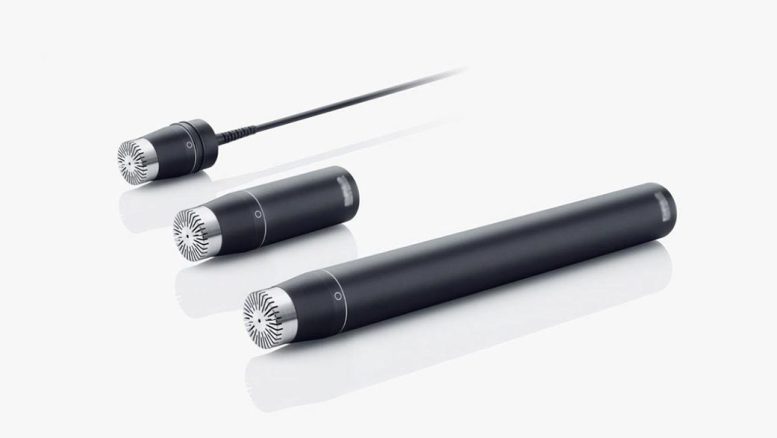
These commercial-grade microphones are similar to one on the chassis of NASA’s Perseverance Mars rover. Credit: Courtesy of DPA
The Era of Space Microphones
SuperCam studies rocks and soil by zapping them with a laser, then analyzing the resulting vapor with a camera. Because the laser pulses up to hundreds of times per target, opportunities to capture the sound of those zaps quickly add up: the microphone has already recorded more than 25,000 laser shots.
Some of those recordings are teaching scientists about changes in the planet’s atmosphere. After all, sound travels through vibrations in the air. From its perch on Perseverance’s mast, the SuperCam mic is ideally located for monitoring “microturbulence” – minute shifts in the air – and complements the rover’s dedicated wind sensors, which are part of a suite of atmospheric tools called MEDA, short for the Mars Environmental Dynamics Analyzer.
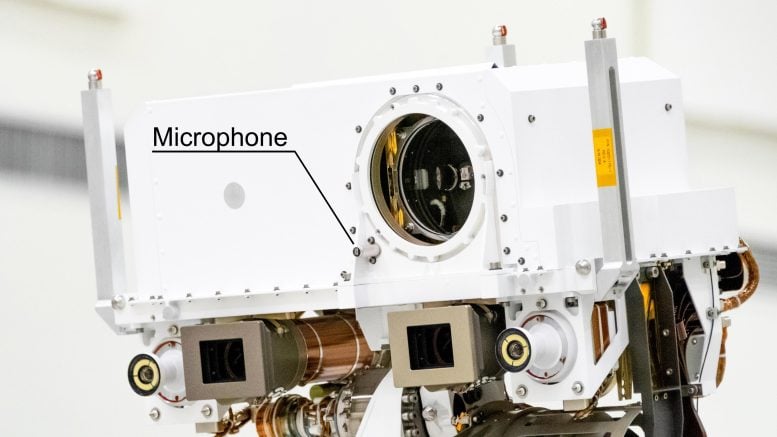
NASA’s Perseverance Mars rover carries two commercial-grade microphones, including this one on its mast. The mast microphone is part of the SuperCam instrument. Credit: NASA/JPL-Caltech
MEDA’s sensors sample the wind’s speed, pressure, and temperature one to two times per second for up to two hours at a time. SuperCam’s microphone, on the other hand, can provide similar information at a rate of 20,000 times per second over several minutes.
“It’s kind of like comparing a magnifying glass to a microscope with 100 times magnification,” said MEDA’s principal investigator, Jose Rodriguez-Manfredi of the Centro de Astrobiología (CAB) at the Instituto Nacional de Tecnica Aeroespacial in Madrid. “From the weather scientist’s point of view, each perspective – detail and context – complements one another.”
The microphone also allows for research on how sound propagates on Mars. Because the planet’s atmosphere is much less dense than Earth’s, scientists knew higher-pitched sounds in particular would be hard to hear. In fact, a few scientists – unsure if they’d hear anything at all – were surprised when the microphone picked up the Ingenuity helicopter’s buzzing rotors during its fourth flight, on April 30, from a distance of 262 feet (80 meters).
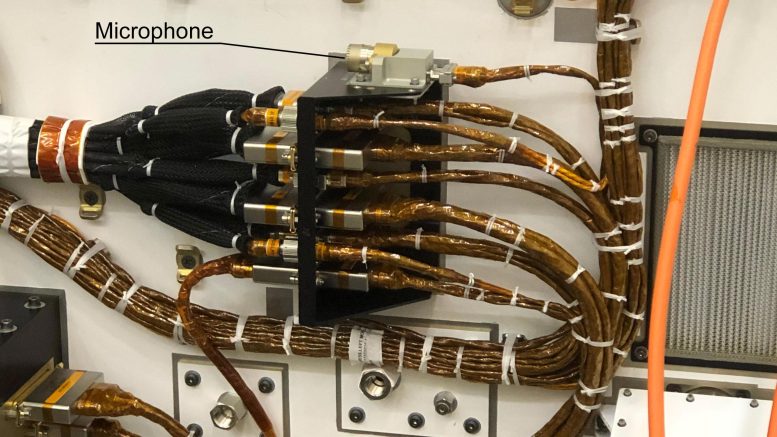
NASA’s Perseverance Mars rover carries two commercial-grade microphones, including this one on its chassis. Credit: NASA/JPL-Caltech
Information from the helicopter audio enabled researchers to eliminate two of three models developed to anticipate how sound propagates on Mars.
“Sound on Mars carries much farther than we thought,” said Nina Lanza, a SuperCam scientist who works with the microphone data at LANL. “It shows you just how important it is to do field science.”
Sound Check
There’s another aspect of space exploration that could benefit from an audio dimension: spacecraft maintenance. Engineers use cameras to monitor the wheel wear on Curiosity rover and dust accumulating on InSight’s solar panels. With microphones, they could also check a spacecraft’s performance the way mechanics might listen to a car engine.
The Perseverance team is amassing loads of recordings from the rover’s chassis mic, which is well-positioned to listen to its wheels and other internal systems. While there aren’t enough recordings yet to detect any changes, over time, engineers may be able to pore over that data and discern subtle differences, like additional electric current going to a particular wheel. This would add to the ways they already monitor the spacecraft’s health.
“We would love to listen to these sounds regularly,” said Vandi Verma, Perseverance’s chief engineer for robotic operations at JPL. “We routinely listen for changes in sound patterns on our test rover here on Earth, which can indicate there’s an issue that needs attention.”
More About the Mission
A key objective for Perseverance’s mission on Mars is astrobiology, including the search for signs of ancient microbial life. The rover will characterize the planet’s geology and past climate, pave the way for human exploration of the Red Planet, and be the first mission to collect and cache Martian rock and regolith.
Subsequent NASA missions, in cooperation with ESA (European Space Agency), would send spacecraft to Mars to collect these sealed samples from the surface and return them to Earth for in-depth analysis.
The Mars 2020 Perseverance mission is part of NASA’s Moon to Mars exploration approach, which includes Artemis missions to the Moon that will help prepare for human exploration of the Red Planet.
JPL, which is managed for NASA by Caltech in Pasadena, California, built and manages operations of the Perseverance rover.

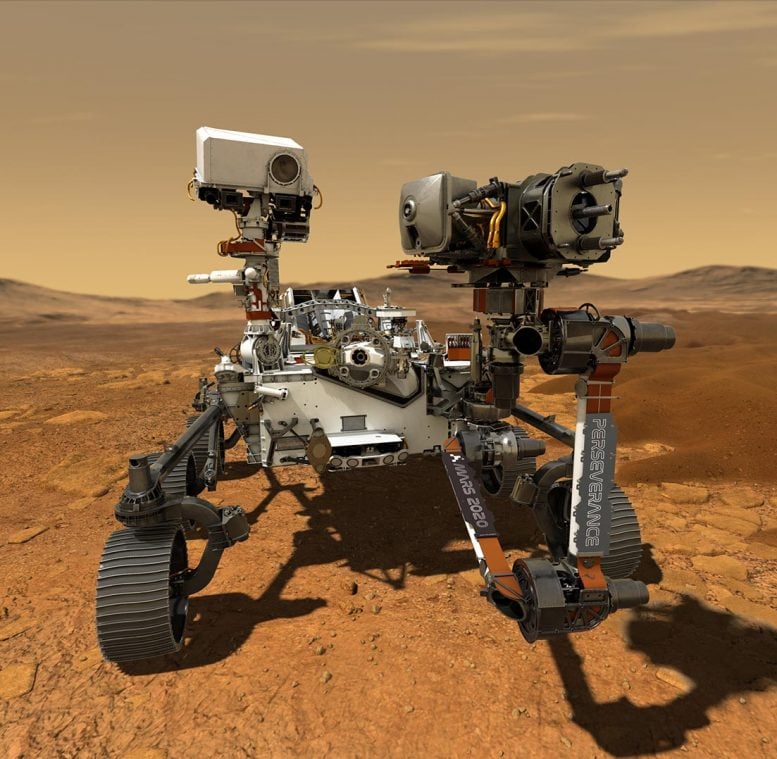







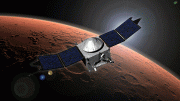
So…Mars sounds like “yakkity yakkity yak”?
I agree. These people like the sound of their own voice more than the sounds on Mars.
Too much commentary, not enough sound samples
So, where is the whole recording video? All I heard is a bunch of tiny clips between the promotional jibberish selfies.
Wasting money on MARS that humans are never gonna survive on. Put those resources on Earth’s climate change. Let’s save the planet first.
Where are the caves. Who cares about the rocks.
Too much explanation- not needed. Something as alien as the sound on another planet is strong enough to stand on its own – without comment. Like rain while at night with a window open. Thank you for making the sounds available in between the noise.
Viva Science !
I would have liked to hear a sample of what it sounds like on earth for comparison. Like how the rover sounds driving over rocks. Or the drone flying overhead. For instance what does the same wind speed sound like on earth in a similar environment followed by the Martian audio. They obviously tested these functions (flight, driving, etc) on earth before sending them to Mars.
Just wished you’d played more, and for longer periods. Wasn’t interested n all the talking. So. Not sure if real. I want time in videos. U said many yrs. Didn’t think it had landed MANY YRS ago.
Blah blah blah! I wanna hear Mars not Earthlings…
Here’s how to make bars come to life what do with the spaceship put some water down somewhere at some grass seeds and then the grass was absorb all the carbon monoxide and put out oxygen and leave it sit but I mean you got to do a big big big big Gary of it and a lot of water and then you got to add some water plants so it can oxygen kids start forming in the atmosphere and you got to make sure that the water is going to produce rain and come back leave it sit for a few years and I bet you oxygen will start feeling Mars why is everybody being so stupid because we destroyed Mars and came to Earth and now we’re destroying Earth so we got to get Mars going okay so we can all get back there right it’s just a hypothetically theory.
This is completely stupid. The majority of your statement is grammatically incorrect and the only science you present are your own stupid ideas. Research this next time.
Mars not bars nobody would party at those bard
Area not gary gary would die after all that maybe plant trees and fish and some bugd.
Gee, that’s so cool really far out but it’s kinda like a long slow fart. I think Gary was right Youz guys should a brought some grass seeds and water!! What’s hell you gonna spend $25 Billion on studying dust? Are you f-Inog crazy??
Couldn’t hear the helicopter because she was talking
I have been hearing those sounds since covid started…and without all the jets in the air it is easier to hear them…and i am in michigan..and i have recorded some and they have a weird repeat pattern…it is kinda cool…and with some of the shooting stars you can hear a sonic boom…
So it sounds like nerdy scientists!. How enlightening.